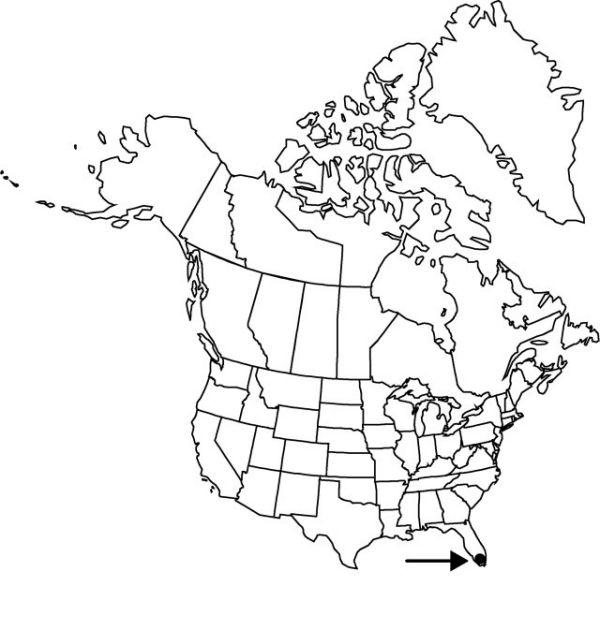Maxillaria crassifolia
Bonplandia (Hanover) 2: 16. 1854.
Plants epiphytic, cespitose, to 20 cm. Stems without pseudobulbs, or apparently so. Leaves 4–5 per shoot; blade linear-elliptic, 7–27 × 1.3–3 cm, leathery, apex unequally 2-lobed. Inflorescences several per leaf-axil, successively borne and barely emerging, apparently supported on short, lateral rhizomes. Flowers yellow; sepals elliptic to ovate, 13–15 × 4–6 mm, apex acute, thickened; petals oblanceolate, 11–14 × 3–4 mm, apex acute; lip articulate with column-foot, rhombic, 12–15 × 5–6 mm, lateral lobes inflexed toward column, constricted distal to middle; callus sticky, linear; column arching, cylindric, 9–10 mm, foot 1–2 mm. Capsules 2.5–3 cm.
Phenology: Flowering throughout year (fall–winter, Fla).
Habitat: Epiphytic
Elevation: 0–10[–1300] m
Distribution

Fla., Mexico, West Indies, Central America, South America
Discussion
Maxillaria crassifolia is self-pollinating in Florida. It occurs much more commonly in the rest of its range.
Selected References
None.